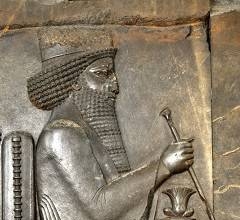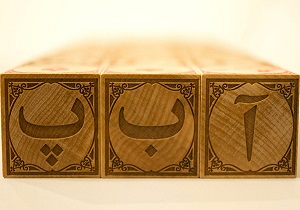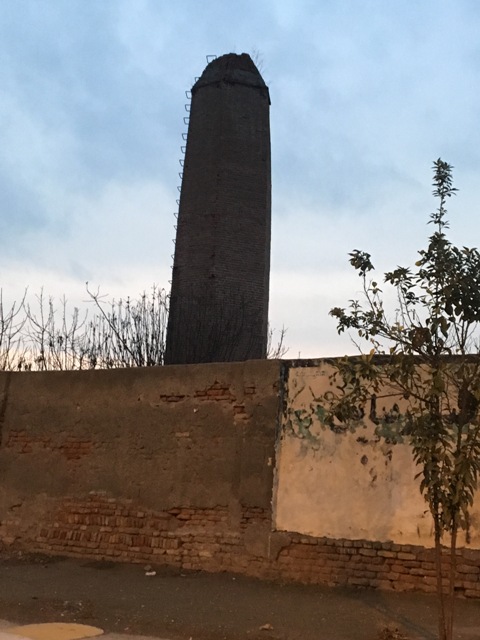History of the Persian Gulf Persian Gulf (Aryan Gulf)

Persian gulf (or Persian Gulf) It is located along the Oman Sea and between the Arabian Peninsula and Iran. Its area is 233,000 square kilometers. From the east, it leads to the Indian Ocean and the Arabian Sea through the Strait of Hormuz and the Oman Sea, and from the west it ends at the Arundroud River delta, which is the result of the connection of the Tigris and Euphrates rivers and the Karun River joining it.. Gulf of Pars is a name left over from the oldest sources, because it dates back to centuries BC, and is tied to Pars and Fars, the name of the land of the Iranian nation.. The Greek word for this bay, "Gulf of Pars", was used, which is derived from the first important empire of this region, the Persian Empire..
In the 1960s and with the rise of pan-Arabism, some Arab countries named the Persian Gulf in other ways than "Persian Gulf".. Iran, in turn, by passing two resolutions in the United Nations, officially included the name of the Persian Gulf in the documents of this organization.. The first resolution numbered UNAD 311/Qen was approved on March 5, 1971, and the second one was numbered UNLA 45.8.2 on August 10, 1984..
The countries of Iran, Oman, Iraq, Saudi Arabia, Kuwait, United Arab Emirates, Qatar and Bahrain are adjacent to the Persian Gulf.
Geologists believe that around five hundred thousand years ago, the initial shape of the Persian Gulf was formed next to the southern plains of Iran, and over time, due to changes in the internal and external structure of the earth, it found its current stable shape..
name
The Persian Gulf is a name left over from the oldest sources, because it dates back to centuries BC, and it is tied to Pars and Fars - the name of the land of Iran..
The Persian Gulf in ancient times
The Persian Gulf with the same name is very old as some people believe: "The Persian Gulf is the cradle of world civilization or the origin of mankind." The ancient inhabitants of this region were the first people who learned the method of seafaring and invented ships and connected the East and the West.. But Iranian seafaring in the Persian Gulf began nearly 500 years ago during the reign of Darius I.. Darius the Great created the world's first naval fleet. His ships traveled the length of the Indus River to the shores of the Indian Ocean and the Oman Sea and the Persian Gulf, and then skirted the Arabian Peninsula and reached the end of what is now the Red Sea.. For the first time, he ordered a canal to be dug at the current location of the Suez Canal, and his ships entered the Mediterranean Sea through this canal.. It is written in an inscription found at the site of this channel: "I am Persian. I opened Egypt from Persia. I ordered the digging of this channel from the river that flows from Egypt to the sea that comes from Persia, so this canal was dug as I ordered and the ships will come from Egypt to Persia through this waterway as I wanted. This is the first written document. The rest is about the Persian Gulf. From the travelogue of Pythagoras in 570 BC to 1958, the name of the Persian Gulf or its equivalents in other languages have been recorded in all written sources of the world.. From the time of Gamal Abdel Nasser, the former president of Egypt, with his encouragement and the rise of Arab prejudice, Arab countries officially changed the historical name of the Persian Gulf in the media and official books..
During the period of Darius II, an Iranian fleet under the leadership of Sardar Sadasep was given a mission to circumnavigate the world. (Mauritania) They went as far as Ashanti and the coast of Benin, but due to encounters with wild tribes, they left the journey incomplete.
The Persian Gulf is bordered by Iran to the north, Kuwait and Iraq to the west, and Saudi Arabia, Bahrain and the United Arab Emirates to the south.. Its width is 240,000 km and it is the third largest bay in the world after the Gulf of Mexico and Hudson Bay.
This bay is connected to the Oman Sea by the Strait of Hormuz and through it to the open seas, and its important islands are: Khark, Abu Musi, Big Tonb, Small Tonb, Kish, Qeshm, and Lawan, all of which belong to Iran.. The Persian Gulf and its coasts are rich in oil and gas mines, and it is the oil transportation route of countries such as Kuwait, Saudi Arabia, and the United Arab Emirates.. For this reason, it is considered an important and strategic region. There are important ports on the Persian Gulf, including Sharjah, Dubai, Abu Dhabi, Bandar Abbas and Bushehr. (Except for Dubai and Abu Dhabi, other ports are sacred in the transverse ownership of Iran .) named. Seafaring in the Persian Gulf has a very long history, but the first definitive evidence in this field dates back to the 4th century BC.. After the closure of the trade route between the East and the West during the Ottoman period, the Portuguese realized the importance of this bay, so that they occupied the Persian Gulf throughout the 16th century.. But after that, England was able to remove the rival countries from it and dominate it at the beginning of the 19th century. However, in the following years, the countries on its southern border gradually became independent and England lost its bases.. The Persian Gulf with the same name is very old as some people believe: "The Persian Gulf is the cradle of world civilization or the origin of mankind." The ancient inhabitants of this region were the first people who learned the method of seafaring and invented ships and connected the East and the West.. But Iranian seafaring in the Persian Gulf began nearly 500 years ago during the reign of Darius I.(It means the Aryan peoples of Iran because the Elamites and … They were also Iranians, and the ancients sailed in the Persian Gulf before Christ, but they were not Aryans.). Darius the Great created the world's first naval fleet. His ships traveled the length of the Indus River to the shores of the Indian Ocean and the Oman Sea and the Persian Gulf, and then circumnavigated the Arabian Peninsula and reached the end of what is now the Red Sea.. For the first time, he ordered a channel to be dug at the current location of the Suez Canal, and his ships entered the Mediterranean Sea through this channel.. It is written in an inscription found at the site of this channel: "I am Persian. I opened Egypt from Persia. I have given the command to cut this channel from the river that flows from Egypt to the sea that comes from Persia, so this channel was cut as I ordered and the ships will come from Egypt through this waterway to Persia as it was my will. In this inscription, Darius mentioned the Persian Gulf as "the sea that comes from Persia", and this is one of the first historical documents available about the Persian Gulf.. In the book of Avesta, although the name of the Persian Gulf is not explicitly mentioned, in the Yasht seal, in the topic of Mehr or Mitra, there is also a reference to Arvand, which was called Arung in that period, and it is said that: "Owner of the vast plains" and "tizzy horses" who knows the truth and is a warrior with good physique and experience in battle, who has a thousand ears and a thousand eyes and a thousand dexterity and dexterity, he is the one with whom war and victory will never fail. He is never deceived, if someone breaks a pact with him, whether it is in the east of India or at the mouth of Shat Arang, there is no escape from him. That high place overlooks all the Aryan residences.
The name of the Persian Gulf among the Greeks
The Greeks were the first to call this bay "Persikos Sinus" or "Sinus Persikos", which is the Persian Gulf.. Since this name appears for the first time in authentic historical sources written by non-Iranians, there is no racial doubt in its status.. As the Greeks were the first to call the land of Iran "Perse" and "Persepolis" which means the city or country of the Persians.. Strabane, the geographer of the first century AD, also mentioned the Persian Gulf many times in his book. He mentions the place of residence of the Arabs between the Red Sea and the Persian Gulf. Also, another Greek historian, Flearius Arianos, in his book on the history of Alexander's war journeys, mentions this bay as "Persicon Kate", which is nothing but the Persian Gulf.. Of course, searching in travelogues or historical books adds to the amount of indestructible documents that call the Persian Gulf "Persian Gulf".. This blue area has always been extremely important for the Iranians, who have been the owners of the powerful government and whose empire was very extensive in successive centuries, both economically and militarily.. In this way, they could access the great sea with their ships and achieve economic and military goals..
The name of the Persian Gulf in Arabic
Arabic language works are also the best and richest sources that can be used in this study to identify and justify the quality of the name of this sea.. In all Arabic sources before 1958, the Persian Gulf is recorded as the Persian Sea or the Persian Gulf. In these sources, the works of the Persian Sea and its characteristics have been discussed more than the cultural works in any other language.. In the works of Ibn Battuta, Hamdullah Mostofi, Yaqut Hamavi, Hamza Esfahani, Nasser Khosrow Qabadiani, Abu Rihan Biruni, Ibn Balkhi and others, most of whom also wrote their books in Arabic, as well as in the works of new Arab writers from the name of "Persian Gulf" without Low and low caste has been mentioned.
History of counterfeiting the title of the bay
There was no controversy about the name of the Persian Gulf until the early 1960s, and in all European, Asian, and American sources, encyclopedias and geographical maps of these countries, the name of the Persian Gulf is mentioned with the same name in all languages.. The term "Arabic Gulf" was used for the first time during the period under the tutelage of the sheikhdoms of the Persian Gulf by British agents and especially by one of the British political representatives living in the Persian Gulf, named Roderick Owen, in a book called Golden Bubbles in the Gulf. A. R. B. wrote in 1958 that "I have not seen a name other than the Persian Gulf in all the books and maps, but after spending several years on the shores of the Persian Gulf, I realized that they are the inhabitants of the Arabian coast. Therefore, courtesy dictates that this Let's call the Gulf A-R-B-Y" he and another person named Sir Charles Belgrave raised this issue with the intention of dividing between Iran and the Arab countries.. Sir Charles Belgrave, who has been a political representative and agent of the British government in the Persian Gulf for more than 30 years, after returning to England in 1966, published a book about the southern shores of the Persian Gulf, and wrote in it that "the Arabs prefer the Persian Gulf to the Persian Gulf." "R-B-Y". This representative definitely instilled this thought in the authorities of the southern Emirates of the Persian Gulf before publishing the book and returning to England. On the self-introduced book, the term "Al-Khalij al-R-B-Y" will spread in the press of Arab countries, and in official correspondence in English, the term "A-R-A-B-Y-A-N Gulf" will replace the term The usual and common old "Persian Golf" becomes.
Sea of Persia
The Persian Sea is a name that the Arabs used in the early centuries of Islam instead of the Persian Sea, and this concept also included the Persian Gulf and the Arabian Sea, but in recent centuries, it only refers to the water area that includes the Strait of Hormuz to the mouth of the Arvand River, and instead of the sea Fars was called the Persian Gulf until 1958, following a call by nationalist leaders in the Arab League, it was decided to call the Persian Gulf the Arab Gulf, and now this new name is used in 22 Arab countries and in some of Western media also use this new name. This has provoked strong protests by Iranians. Iranians believe that the new name is fake and politically motivated and is used due to ethnic prejudice, and the historical name of the Persian Gulf should still be used..
Britain's purpose of fictitiously naming the Persian Gulf
The British were the first agents of planting this seed of hypocrisy because they wanted to turn the Persian Gulf into an A-N-G-L-Y-S sea.. Later, in the 1980s, the Americans, following them, talked about turning the Persian Gulf into the U.S. Gulf.. From the point of view of Americans and Europeans, this region is the "vital artery of the West" in the "Western Strategic" region and "area of special interests", therefore, if they are able, they will control the Persian Gulf directly or indirectly.
But the fact of the matter is that the Persian Gulf is an ancient historical name that has been given to this bay since the beginning of history, and the motive of the calculated effort to change this name is nothing but to create sedition and discord between the countries of this region.. As Jean-Jacques Perini, the author of the Persian Gulf book, admits. "Many nations and peoples have conquered and ruled the shores of the Persian Gulf, but their days have passed and they have become extinct.. It is the only people of Pars who have survived with their intelligence and tact and have preserved the legacy of their sovereignty until now. But the problem is among a few politicians and statesmen and owners of oil capitals, who spread the seeds of cultural hypocrisy with oil bribes.. No reputable western institution and organization is willing to question the authenticity of the Persian Gulf name, unless they have received a lot of money.






Branch of Pars people ❤️
In the history of every nation that took over the government, the name of the country was the same as the name of their nation, as, except in exceptional cases, until the contemporary century, the name of Iran was not Iran. . Therefore, the name of the country was called Fars in some periods and it was applied to the entire country of Fars, and over time other countries also called this land by the same name, as some countries still call Iran Persia. . Therefore, why is this bay not called Iran, for example, or if the name of the Persian people should be given to it, why not the names of other peoples, because not many Persians live there.. And now there is doubt among the Iranians themselves and they think that the name Fars means the Persian people on the Persian Gulf ! And if the age of the name is important, before the arrival of the Persian people to this land called Iran, without a doubt, thousands of years before them, this bay had a different name. . I also love my country Iran, but the name Fars was once on this bay and it meant the name of the whole country, but now our country is not called Fars and there is no reason why it should still be called Fars. .
Fars is a sign of Iran's historical ownership of this tributary . The most stable government along this tributary has been Iran and everyone has accepted this .
If this is the case, the names of all cities and rivers should be changed periodically
Hello and don't be bored, please delete the fake picture and poem assigned to Ferdowsi. According to the research of the honorable Shahnameh scholar Mr. Jalal Khaleghi Mutlaq, these verses were added to the Shahnameh. We must keep in mind that patriotism is not synonymous with racism and we should not start spreading hatred against other ethnic groups and nations in the name of defending Iran's water, soil and history.. Spreading hatred is the work of the nationalists and enemies of Iran. Thanks.
Yes, you are right, if we really love Iran and Ferdowsi, we should not attribute this fake poem to Shahnameh.
Ferdowsi was a very honorable person.
(Thanks for your good site)